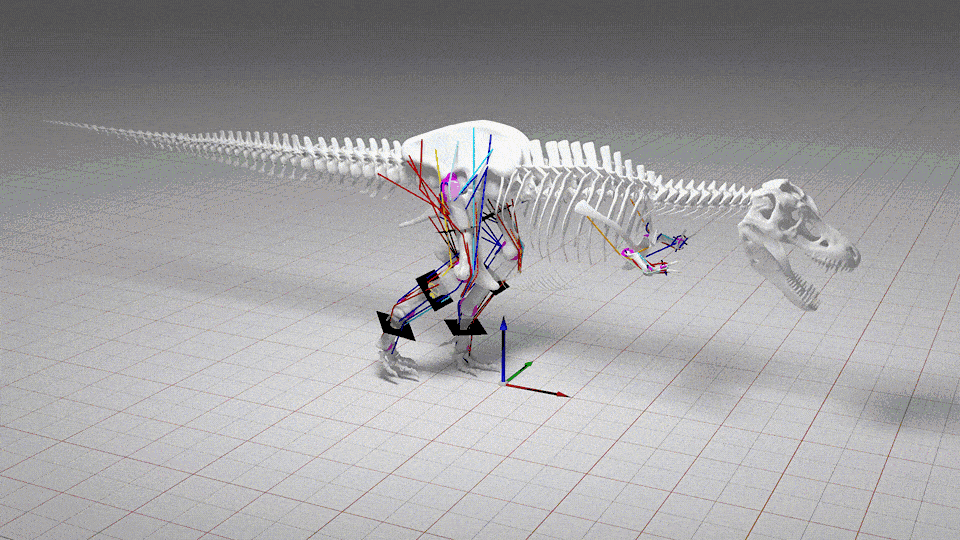When you purchase through link on our site , we may earn an affiliate delegation . Here ’s how it work .
In the shadow of a monolithic Patagonian glacier , paleontologists have unearthed a rare fossil find : an ancient marine reptile that died while pregnant . This dolphin - similar creature , called an ichthyosaur , is the first of its form to be discovered in Chile , where it was retrieved from a gibe internet site near the Tyndall Glacier in the Southern Patagonian Ice Field .
" This land site is really unparalleled , because it ’s capturing a metre flow in Earth ’s story where we do n’t have a very good fossil phonograph recording for maritime reptiles , " Erin Maxwell , an ichthyosaur specialist and curator of marine reptiles at the State Museum of Natural account in Stuttgart , Germany who helped unearth the fogey , say Live Science .

Judith Pardo Pérez with the ichthyosaur skeleton in Chile.
ichthyosaur ( which translates to " Pisces lizards " ) dominated the seas beginning in the early Triassic stop , about 251 million class ago , and they lived concurrently with dinosaur until about 95 million years ago , according to theUniversity of California Berkeley . These unnerving marine reptiles mostly ate ancient , hard - shelled squid relative , as well as some types of Pisces and minuscule ichthyosaurs . Thesmallest ichthyosaur speciesgrew to measure around 1.3 feet ( 0.4 meters ) long , while the largest reached almost 69 foot ( 21 meters ) from snout to tail , harmonize toNational Geographic .
At 13 foot ( 4 meters ) long , the Tyndall ichthyosaur is a intermediate - sized specimen that date to around 129 to 139 million old age ago , in the early part of the Cretaceous period ( about 145 million to 66 million years ago ) .
refer : Image gallery : Ancient goliath of the sea

A helicopter prepares to lift the heavy ichthyosaur load, in front of the Tyndall Glacier.
The dodo came to Maxwell ’s care when it was first ascertain in 2009 by paleontologist Judith Pardo - Pérez , who get together Maxwell ’s inquiry group in Stuttgart presently after the fogy ’s discovery . Pardo - Pérez — now a research worker at the GAIA Antarctic Research Center at the University of Magallanes ( UMAG ) in Punta Arenas , Chile — and her fellow who found the ichthyosaur specimen knight it " Fiona " after actress Cameron Diaz ’s ogre character in the movie " Shrek " ( Dreamworks , 2001 ) , because the fossil ’s preservative oxide coating turned it immature , like its plucky monster namesake .
But it took 13 years for scientists to finally excavate and study Fiona ’s remains , which Maxwell said is n’t uncommon .
" There is often a very large stave between discovery of the fogy and study of the fossil , " Maxwell explain In this causa , the delay was partly due to positioning : the Tyndall Glacier is passing removed , and so every fogy from the internet site — including 23 other ichthyosaur that were strike alongside Fiona — had to be carefully airlifted out by helicopter after excavation . deplorably , many more fossils were go out behind . " We have almost a hundred ichthyosaurs in the Tyndall Glacier fossil deposit and many of them , unfortunately , will never be excavate , due to the difficulty of access , being in risk areas ( cliff border ) , and lack of investment company , " Pardo - Pérez said in astatement .

Specimens like Fiona , which fossilise during pregnancy , are especially utilitarian for paleontologists because they offer a glance of multiple degree in the biography hertz of that species . " We can tell , for instance , how many embryos those species might have had , and how large they were at birth , " Maxwell said . The first known pregnant ichthyosaur dodo , discover in 1749 and scientifically described in 1842 , confirmed that ichthyosaurs produce live immature rather than lay eggs like most New reptile do , she added .
— 55 - foundation - longsighted Triassic sea monster discover in Nevada
— The universe ’s largest ichthyosaur may have just been discover in the Swiss Alps

— In images : Graveyard of ichthyosaur fogy in Chile
Maxwell hop that the find will avail drum up enthusiasm for South American fossilology , which has historically been look out over in favour of North American , Russian , Chinese , and westerly European internet site . " We really only have a mental picture of what ’s going on in half the globe for the Mesozoic [ 252 million to 66 million years ago ] , " she said . " So these find are very , very important to serve impart a orbicular perspective to our discernment of Cretaceous oceans . "
Originally published on Live Science .















